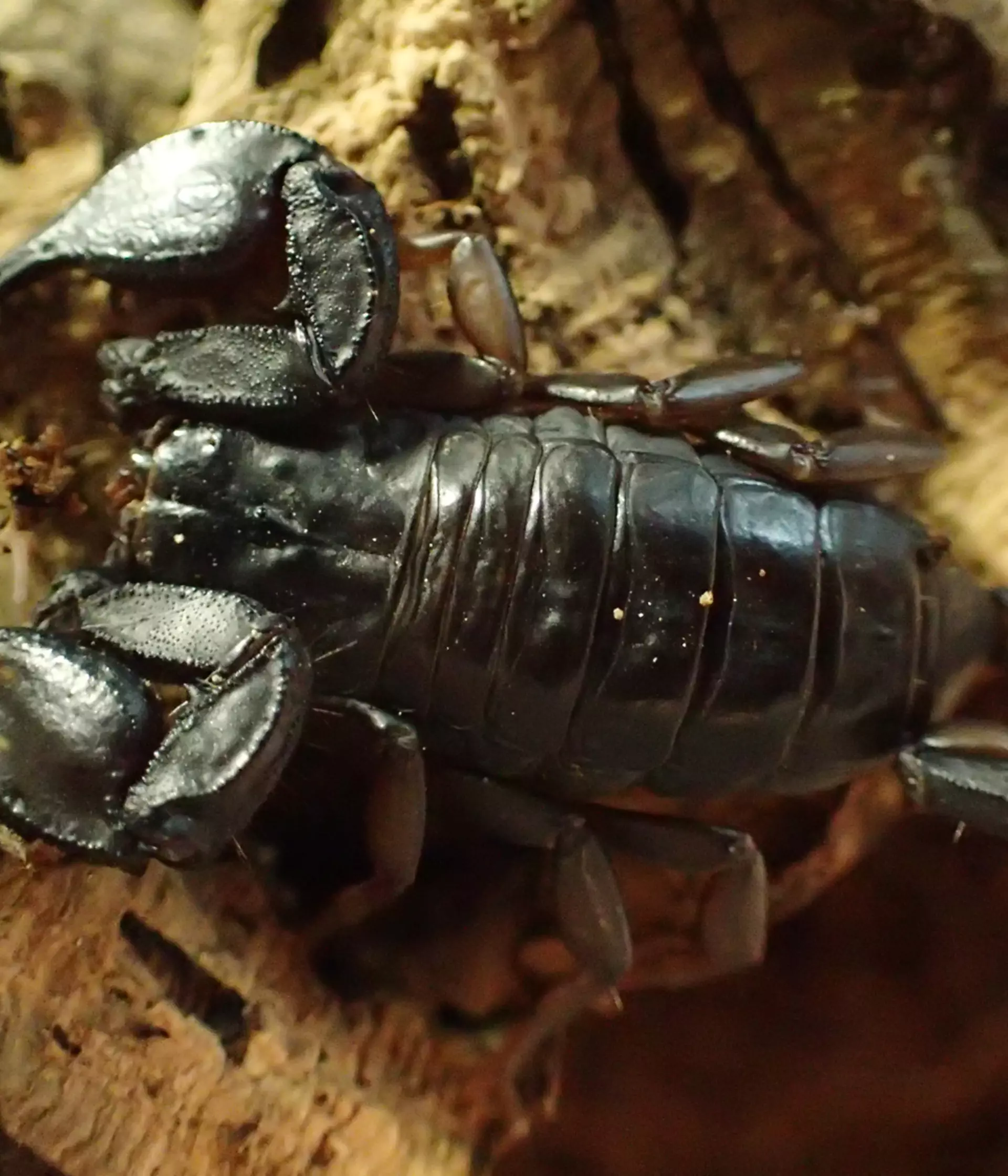What do emperor scorpions look like?
Emperor scorpions are black in colour and feature a long curved tail and two large pincers. Under UV light emperor scorpions fluoresces a blue colour. They glow because of molecules in their exoskeleton - this may alert it to being exposed to light and encourage it to seek shelter.
Emperor scorpion facts
- One of the largest scorpions in the world. Females carry the young on their backs, which are pearly white when born.
- Emperor scorpions are distant cousins of spiders.
- Emperor scorpions depend on their large claws to hunt and protect themselves, and only have a mildly venomous sting.
- Emperor scorpions are most active at night and rely on sensory hairs on their body to find prey, making up for their poor vision.
What do emperor scorpions eat?
A wide range of species including insects, lizards and occasionally small mammals.
Emperor scorpion sting
Emperor scorpions are unlikely to sting, and their sting is not powerful and is similar to a bee sting. As a general rule scorpions with larger claws have less powerful stings, because they are more dependent on their claws for hunting, whereas scorpions with small claws often have the most dangerous stings.
Emperor scorpion lifespan
6-8 year lifespan
Emperor scorpions average length
20cm
Emperor scorpion threats
They are at risk of being over harvested for the pet trade, and emperor scorpions are protected by CITES to prevent over-collecting.
